What is Down Syndrome? Down syndrome (also called Trisomy 21) is a genetic disorder that occurs in approximately 1 of 800 live births. It is the leading cause of cognitive impairment. Down syndrome is associated with mild to moderate learning dissabilities, developmental delays, characteristic facial features, and low muscle tone in early infancy. Many individuals with Down syndrome also have heart defects, leukemia, early-onset Alzheimer's disease, gastro-intestinal problems, and other health issues (Citation 181). | 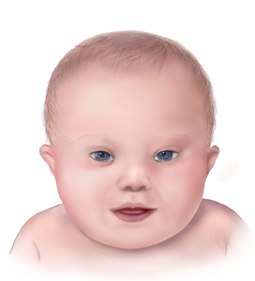 |
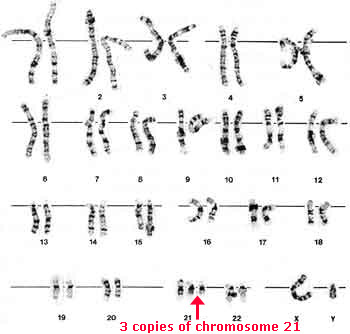 | What are the chromosome basics of Down syndrome? Genes on an extra copy of chromosome 21 are responsible for all characteristics associated with Down syndrome. Normally, each human cell contains 23 pairs of different chromosomes. Each chromosome carries genes, which are needed for proper development and maintenance of our bodies. At conception, an individual inherits 23 chromosomes from the mother (through the egg cell) and 23 chromosomes from the father (through the sperm cell). However, sometimes a person inherits an extra chromosome from one of the parents. In Down syndrome, an individual most often inherits two copies of chromosome 21 from the mother and one chromosome 21 from the father for a total of three chromosomes 21. Because Down syndrome is caused by the inheritance of three chromosomes 21, the disorder is also called trisomy 21. About 95% of individuals with Down syndrome inherit an entire extra chromosome 21. |
Symptoms, Characteristics, & Features of Down Syndrome Although the severity of Down syndrome ranges from mild to severe, most individuals with Down syndrome have widely recognizable physical characteristics. These include:
| 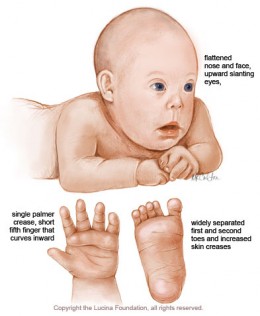 |
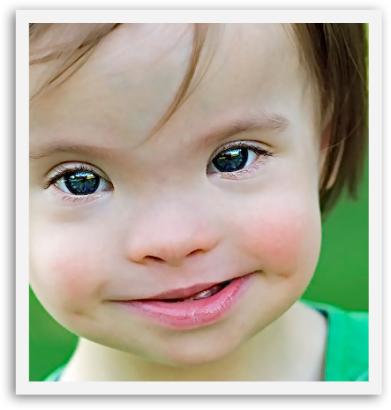  | How often does Down syndrome occur? CDC estimates that each year about 6,000 babies in the United States are born with Down syndrome. In other words, about 1 of every 691 babies born in the United States each year is born with Down syndrome.
|
Treatment: While there are many treatments for Down syndrome, Down syndrome is not a condition that can be cured. However, there are treatments and therapies for the physical, medical and cognitive problems associated with Down syndrome. The goal of medical treatments in Down syndrome are to manage the medical conditions associated with Down syndrome, while early intervention and therapies help many people with Down syndrome live long productive lives (Citation 188). Click here for a full list of treatments and therapies. | 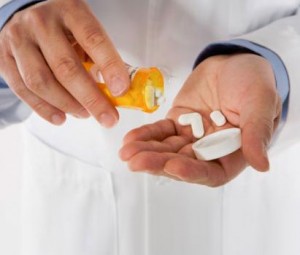 |